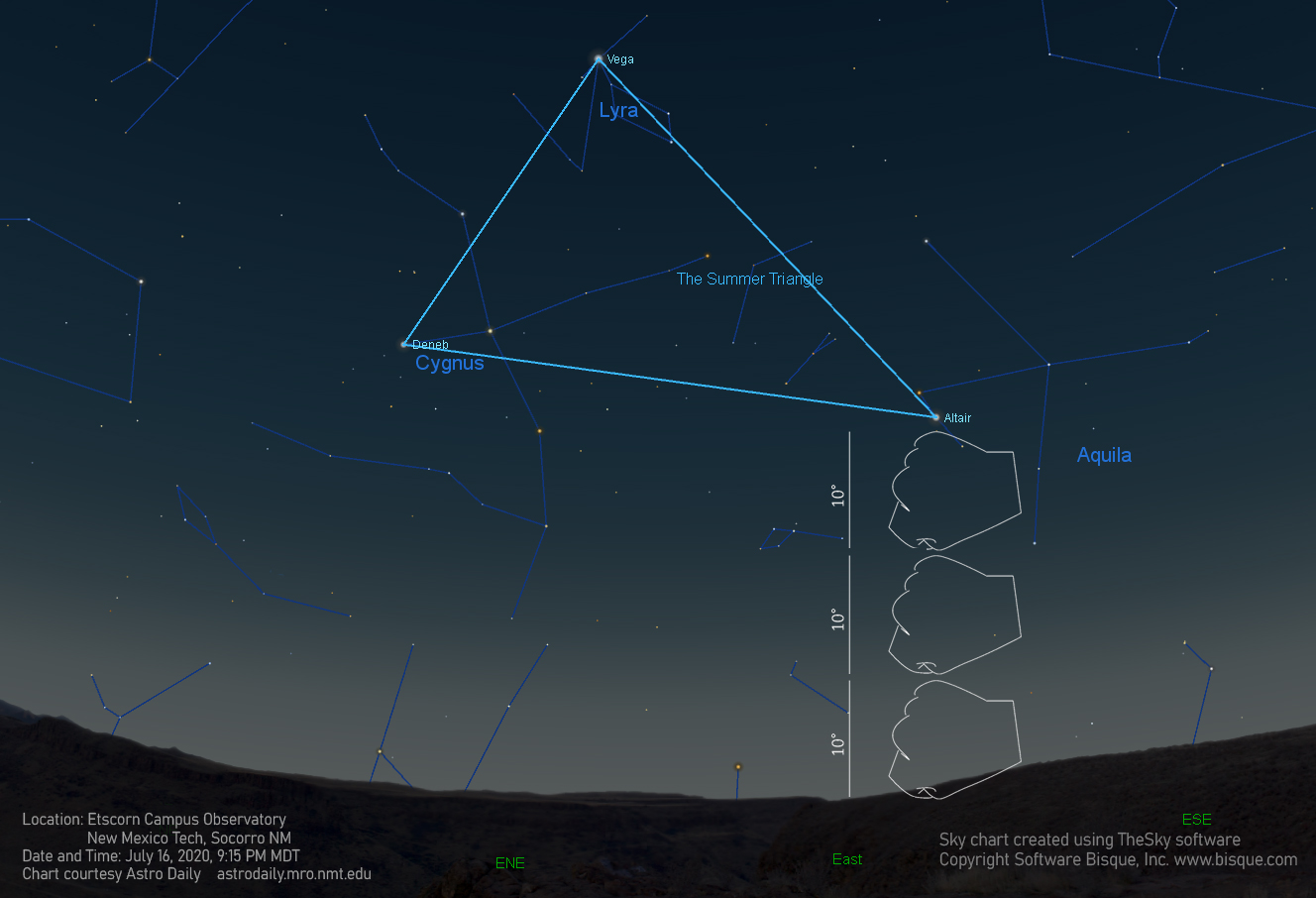What do constellations and asterisms have in common, and in what ways do they differ? Keep reading to find out!
Today we’re going to take a look at the Summer Triangle, a grouping of three stars that is visible through the summer months in the northern hemisphere. If you’ve never heard of the constellation Summer Triangle that’s to be expected because it’s not a constellation, it’s an asterism.
Constellations and asterisms are similar in that they both refer to a recognizable pattern of stars visible to the naked-eye. However, a constellation is more; it is an officially recognized designation that refers not only to the pattern of visible stars but to a well-defined area of the sky surrounding those stars. These areas of the sky are designated by the International Astronomical Union, the recognized authority responsible for assigning designations and names to celestial objects.
The Summer Triangle is made up of the stars Altair, Deneb, and Vega, the brightest stars in the constellations Aquila, Cygnus, and Lyra respectively. The Milky Way runs through the Summer Triangle like a stream of sparkling stars, and appears brightest when it is directly overhead around 1 AM at this time of year. But you don’t have to stay up into the wee hours of the night to see this dazzling set of stars. At a fairly dark sky site such as ours at New Mexico Tech’s Etscorn Campus Observatory in Socorro, NM, Altair, Deneb, and Vega are bright enough to be seen during Nautical Twilight which starts about an hour after sunset (sunset is at 8:20 PM tonight). Summer Triangle visibility this evening is helped by the Moonless sky – the Moon doesn’t rise until 2:35 AM tomorrow morning, and even then it is only 17% illuminated so will not significantly add to the sky brightness.
At 9:15 PM tonight (the time on the sky chart above) the Summer Triangle will be visible toward the ENE. Vega, the brightest of the three stars, will be about 55° above the horizon; Altair and Deneb will be 30° and 35° above the horizon, respectively.
This is a good time to take a moment to talk about how to measure distances in the sky using nothing but your hands! Fully extend your arm out in front of you and make a fist. The distance between your pointer finger and pinky knuckles covers a distance of about 10° in the sky. Three fists up from the horizon will closely measure the altitude of Altair in Aquila as illustrated on the attached sky chart. We’ll be talking about more hand distance measurements in the near future.
Unfortunately, after checking today’s local weather forecast I suspect that we’re going to be socked in tonight with monsoon clouds, so tonight may not be the best night for observing the sky. However, you can continue to refer to the attached sky chart with a little modification; for every day later than the date on the chart, the stars will be about 1° higher in the sky at the same time of the chart. Stars rise four minutes earlier each day because of the stars’ annual motion, which is due to the Earth’s revolution around the Sun. This annual motion is not to be confused with a star’s diurnal or daily motion, which is due to the Earth’s rotation on its axis, and is the reason the stars seem to travel through the sky from east to west over the course of a night. Moreover, these two types of a star’s apparent motion are not to be confused with a star’s proper motion, intrinsic motion, or its motion due to the precession of the Earth. But that’s a discussion for another day!
Later in the summer we’ll visit the Summer Triangle asterism once again, when it will be high in sky much earlier in the evening (recall that stars rise four minutes earlier each day). At that time, we’ll take a closer look at the various kinds of celestial objects that we can see with just a pair of binoculars, from a stunning double star to clusters of thousands of stars to clouds of gas ejected by dying stars. Meanwhile, cross your fingers for a break in the clouds in the coming days so we can get a glimpse of the Summer Triangle!
M. Colleen Gino, MRO Assistant Director of Outreach and Communications

